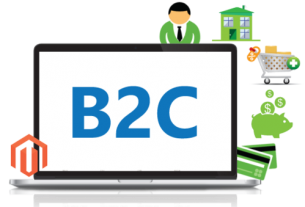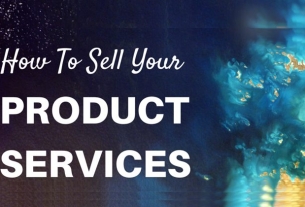What is business-to-business e-commerce?
It’s companies buying from and selling to each other online. But there’s more to it than purchasing. It’s evolved to encompass supply chain management as more companies outsource parts of their supply chain to their trading partners.
I use electronic data interchange. Am I already doing it?
Yes. And if you’re getting value from your EDI investments, there’s no reason to abandon them now. But it’s a good idea to think about whether any other data exchange methods have a role in your future B2B efforts. EDI has limitations, including an inflexible format that makes it difficult to use for any but the most straightforward transactions. Many small companies never adopted it because it was expensive. Much of the newer e-commerce software uses XML — grammatical rules for describing data on the Web — as its standard for data exchange. Though the software may also handle EDI transactions, XML allows for more variety in the information companies exchange and was designed for open networks.
Predictions that XML will become the dominant standard for data exchange are mostly hype. It’s too early to say how quickly—or how widely—it will be adopted. A few companies have concluded it’s worth it to plunge ahead anyway. Some analysts think the two standards will coexist for the foreseeable future, with companies using EDI where it works and adopting XML where it doesn’t. Then, of course, you’ll have to decide if, and how, your EDI and XML systems should communicate.
What are the differences between B2B and business-to-consumer e-commerce?
There’s the obvious difference in who the customers are — companies or individuals. Beyond that, there are two big distinctions:
B2B efforts require negotiation…
Selling to another business involves haggling over prices, delivery and product specifications. Not so with most consumer sales. That makes it easier for retailers to put a catalog online, and it’s why the first B2B applications were for buying finished goods or commodities that are simple to describe and price.
…and integration.
Retailers don’t have to integrate with their consumer customers’ systems. Most companies selling to businesses do integrate because their systems have to be able to communicate with those of their customers without human intervention.
What are the benefits?
B2B e-commerce can save or make your company money. Some ways companies have benefited from B2B e-commerce include:
* Managing inventory more efficiently
* Adjusting more quickly to customer demand
* Getting products to market faster
* Cutting the cost of paperwork
* Reigning in rogue purchases
* Obtaining lower prices on some supplies
What is a B2B exchange?
At its most basic, a B2B exchange (also called a marketplace or hub) is a website where many companies can buy from and sell to each other using a common technology platform. Many exchanges also offer additional services, such as payment or logistics services that help members complete a transaction. Exchanges may also support community activities, like distributing industry news, sponsoring online discussions and providing research on customer demand or industry forecasts for components and raw materials.
What’s the difference between a public B2B exchange and a private one? Which one should my company use?
Public exchanges are owned by industry consortia or independent investors and have their own boards of directors. Though each exchange sets its own rules, they are generally open, for a fee, to any company that wants to use them. Private exchanges are run by a single company for doing business exclusively with established suppliers and customers (although the systems that support it may be outsourced).
Which one your company uses depends on what you want to do. If you are buying and selling commodity products, public exchanges can be a good venue in which to find low prices or identify new customers. They’re also becoming a popular way for a company to unload excess inventory. In some industries, however, suppliers have been reluctant to use public exchanges because they fear buyers will aggregate their purchases and force prices too low, squeezing their profit margins. Common types of transactions on public exchanges include purchasing through requests for quotations, buying through catalogs and auctions.
Companies that use private exchanges prefer them for the closer online relationships they can have with preferred customers and suppliers. They also think private exchanges are more secure, because data about their trades are at less risk of being exposed to competitors if there’s a security breach. Companies use private exchanges to trade proprietary information like supplier performance metrics and sales forecasts in addition to orders and invoices. Companies also use private exchanges to establish central control over purchasing through contracts with established suppliers.
What’s the first step I should take?
Start with buying so-called indirect supplies like pencils, chairs and copy paper. Most companies start here because it’s easier to set up an online catalog of approved office supplies than it is to automate procurement of specially engineered parts and materials. Plus, you’re not affecting day-to-day operations while you get your feet wet. While the payoff won’t be as big as for more mission-critical purchases (so-called direct materials used to produce the goods or services you sell), it can be significant. The Burlington Northern Santa Fe railroad company lopped an estimated 3 percent to 28 percent off its indirect purchases and saved money internally by automating a manual process for approving purchase orders.
On the sales side, take your cues from your customers. Start with a project that makes it easier for them to do business with you or one that reduces your cost of sales and service. Greensboro, N.C.-based clothing manufacturer Vanity Fair and Delray Beach, Fla.-based office supply vendor Office Depot each built their online purchasing sites because customers asked for them.
What’s collaborative B2B e-commerce?
It’s marketing speak for integrating your supply chain, and it’s a vision of e-commerce nirvana. You’re not just sharing blueprints or your latest sales forecasts; you and your trading partners are giving each other real-time access to your ERP, product design, inventory and other systems. Companies that are doing it say it helps them get new products to market faster, reduce manufacturing time, keep inventory low and adjust more quickly to changes in customer demand.
To collaborate successfully, you and your partners each need up-to-date, functioning systems to serve up whatever data you plan to share, and a way to deliver that information electronically. That can be a big hurdle when many companies still do a lot of business by phone and fax. The Goldman Industrial Group, a Boston-based manufacturer of machine tools for the automobile industry, has found it tough to convince its partners to invest in system upgrades needed for collaboration. There’s cultural resistance as well. Not every company sees the value of sharing what has been confidential information or trusts its partners with it. Some also fear online collaboration might result in layoffs.
Which business units should be involved in a B2B project?
Definitely the units that do purchasing. B2B e-commerce can drastically change how buyers do their jobs, especially if your company is one that still places orders the old fashioned way. Sales and customer service departments will need to be involved with projects that affect how you receive and process orders from customers. And don’t forget the folks who manage your inventory. You may need to get other departments involved, too, depending on the functionality you’re building.
Also involve your suppliers, distributors and customers, and make sure there’s something in the project for them. B2B e-commerce doesn’t only change how you do business internally, your partners have to change too. And unless you’re the 900-pound gorilla in your industry-and sometimes even if you are-you can’t force everyone to do things your way.
What kind of software do I need? Is it expensive?
Exactly what you need depends on whether you’re a buyer or seller, whether you’re dealing in indirect or direct materials and the extent to which you’re integrating your supply chain. Elements of a B2B system may include software for generating purchase orders or requests for quotations (RFQs), processing invoices, building and managing catalogs, responding to RFQs and processing orders. Depending on what you’re trading and how, you’ll want to look for specific features that support your needs. Some of these are online negotiation capabilities, dynamic pricing software, support for international transactions and the ability to generate and process bills of materials. To get the full benefits of B2B e-commerce, you’ll need integration tools to connect these systems with forecasting and planning systems, inventory management, CRM, ERP, logistics and other applications you use for supply chain management and customer service.
Cost is also relative. In general, the more elements of your business you want to integrate with trading partners, the more you have to spend. Office Depot, with $11.6 billion in sales in 2000, put its catalog on the Web for $500,000, and pays $5 million a year to maintain the system. A March 2001 Forrester Research report pegged the cost for buyers to join an online marketplace at between $5.6 million and $22.9 million, including operating costs.
How long will it take to put B2B systems in place?
You can set up an online catalog for your customers in a few months. Starting from scratch to build a portal for your suppliers that integrates with your back-end systems may take you more than a year. The most time-consuming aspect of building B2B systems is mapping your business processes to those of your trading partners.
What if my trading partners aren’t ready to do business online?
Build your B2B application and your partners will probably come to use it. Some companies have built Web portals that allow partners to place orders, input data and access information from their ERP or other back-end systems without any more investment than Internet access. If your partners have to do some of their own software development to use the application, be sure you offer them a big enough carrot (like the promise of additional business) to make the investment pay off for them.



